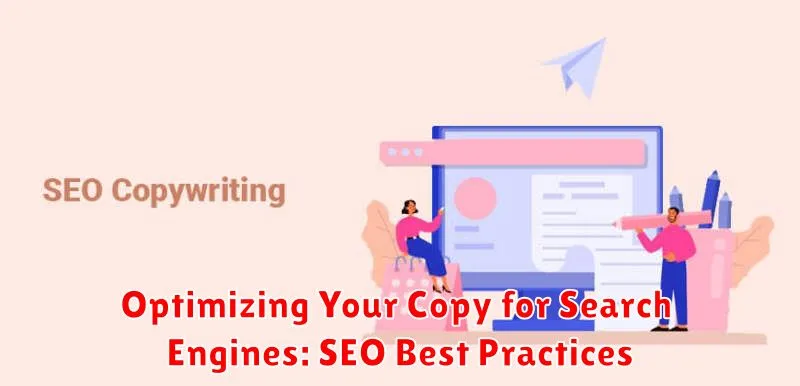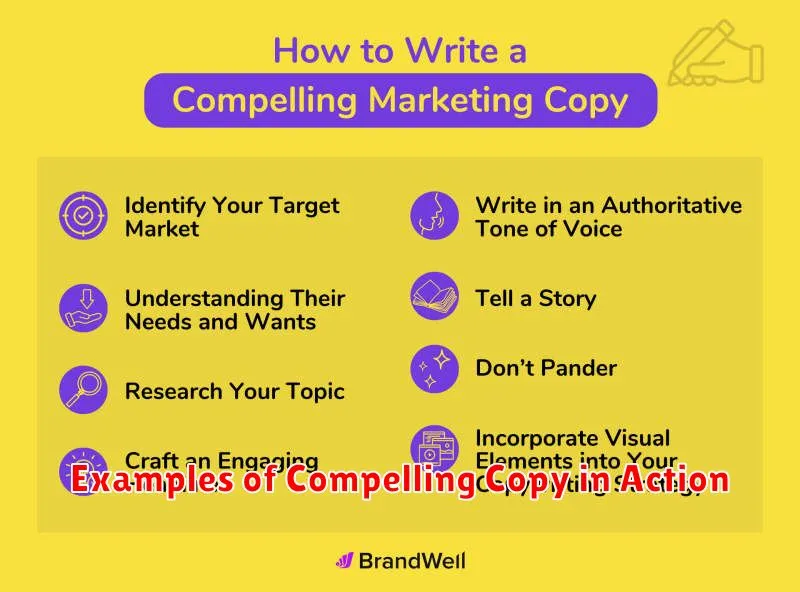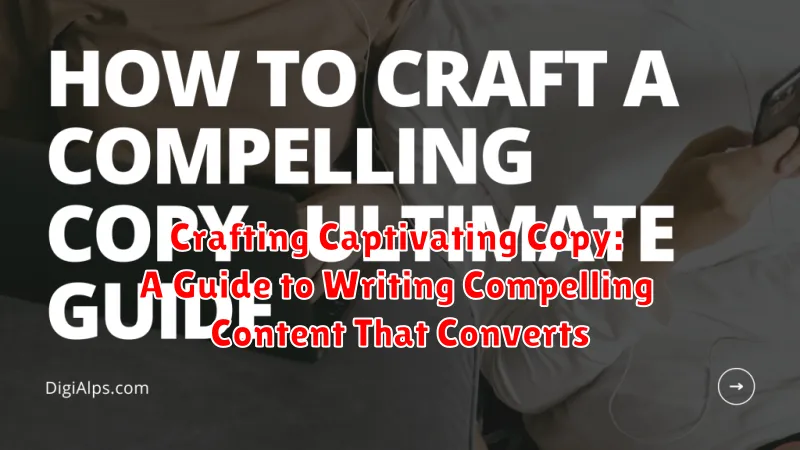In today’s digital landscape, captivating copy is paramount to success. Whether you’re crafting website content, penning compelling ad copy, or creating engaging social media posts, the ability to write content that converts is an essential skill. This guide, “Crafting Captivating Copy: A Guide to Writing Compelling Content That Converts,” will provide you with the tools and techniques necessary to transform your writing from mundane to magnetic. Learn how to craft compelling content that not only captures attention but also drives action, ultimately boosting your bottom line and achieving your marketing objectives. Master the art of writing captivating copy and unlock the potential to influence, persuade, and convert your audience.
This comprehensive guide delves into the intricacies of crafting captivating copy that resonates with your target audience. From understanding the psychology of persuasion to mastering the technical aspects of compelling content creation, we’ll explore the essential elements that make copy effective. Discover how to create content that converts by leveraging proven strategies, including crafting compelling headlines, employing persuasive language, and structuring your content for maximum impact. This journey into the world of captivating copy will empower you to write compelling content that captivates readers, drives engagement, and ultimately, converts prospects into loyal customers.
Understanding Your Audience and Their Needs
Before crafting any copy, it’s crucial to understand your target audience. Knowing their needs, motivations, and pain points allows you to tailor your message for maximum impact.
Start by defining your ideal customer. Consider demographics like age, location, and occupation. More importantly, delve into psychographics: their values, interests, and lifestyle.
Ask yourself:
- What problems are they facing?
- What solutions are they seeking?
- What language do they use?
- Where do they spend their time online?
Conducting thorough audience research provides invaluable insights that inform your copywriting strategy, ensuring your message resonates and drives conversions.
The Power of Storytelling in Copywriting
Storytelling is a powerful tool in copywriting, allowing you to connect with your audience on an emotional level. By crafting narratives that resonate with their values and aspirations, you create content that is not only memorable but also persuasive.
Effective storytelling in copywriting involves several key elements:
- Character: A relatable protagonist, often your ideal customer, facing a challenge.
- Conflict: The problem your product or service solves for the character.
- Resolution: How your offering helps overcome the conflict and achieve a positive outcome.
Weaving these elements together creates a compelling narrative that draws the reader in and demonstrates the value of your product or service in a relatable context. Instead of simply listing features, you show how those features translate into tangible benefits within the context of a story.
Remember, the goal is to evoke emotion and create a connection that transcends a simple transaction. A well-told story can transform a potential customer into a loyal advocate.
Writing Headlines That Grab Attention
Your headline is the first, and often only, impression you make on a potential reader. A compelling headline is crucial for drawing readers in and encouraging them to engage with your content. It’s the gateway to your message, so crafting it effectively is paramount.
Consider these key strategies when writing headlines:
- Clarity: A headline should clearly communicate the topic and benefit of your content. Avoid ambiguity or jargon that might confuse your target audience.
- Brevity: Keep your headlines concise and to the point. Aim for a length that captures attention without overwhelming the reader. Shorter headlines are often more effective, especially in digital spaces.
- Keywords: Incorporate relevant keywords that your target audience might search for. This improves search engine optimization (SEO) and helps potential readers find your content.
- Intrigue: Spark curiosity by posing a question, hinting at a solution to a problem, or offering a unique perspective.
By following these guidelines, you can craft headlines that grab attention and entice readers to delve into the rest of your content.
Creating Engaging Body Copy: Tips and Tricks
Engaging body copy is the heart of your content, expanding on the promise of your headline and guiding the reader towards your desired action. It’s where you build trust, showcase value, and ultimately persuade.
Keep it concise and focused. Every sentence should contribute to your overall message. Eliminate fluff and get straight to the point. Use short paragraphs and vary sentence length to maintain reader interest.
Write with clarity and precision. Avoid jargon or technical terms that your target audience may not understand. Choose strong verbs and active voice to create a dynamic and engaging reading experience.
Highlight benefits, not just features. Focus on what your product or service does for the reader. Instead of simply listing features, explain how those features translate into tangible benefits for the user.
Use formatting to enhance readability. Bullet points, numbered lists, and bold text can help break up large blocks of text and draw attention to key information. This makes your content easier to scan and digest.
The Importance of a Strong Call to Action
A compelling call to action (CTA) is crucial for converting engaged readers into tangible results. Without a clear directive, your meticulously crafted content may fail to achieve its intended purpose.
A strong CTA provides direction, telling the reader exactly what you want them to do next. Whether it’s signing up for a newsletter, downloading a resource, or making a purchase, the CTA guides the user towards the desired action. Clarity and conciseness are paramount. Avoid vague language and opt for action-oriented verbs that inspire immediate engagement.
Consider the placement of your CTA. Strategically positioning it within the content, and at the end, maximizes its visibility and impact. Experiment with different phrasing and button designs to identify what resonates best with your target audience. Testing and refinement are essential to optimizing CTA effectiveness and driving conversions.
Optimizing Your Copy for Search Engines: SEO Best Practices

Search engine optimization (SEO) is crucial for driving organic traffic to your content. By optimizing your copy, you increase visibility and attract a wider audience.
Keyword Research: Begin by identifying relevant keywords that your target audience uses when searching for information related to your content. Use these keywords strategically throughout your copy, including in the title, headings, and body text.
On-Page Optimization: Optimize your on-page elements, including title tags and meta descriptions. These elements provide concise summaries of your content to search engines and users, influencing click-through rates.
Content Structure: Structure your content logically using headings (H2, H3, etc.) to improve readability and make it easier for search engines to understand the hierarchy of information.
Readability: Write clear, concise, and engaging copy that is easy for your target audience to understand. Avoid jargon and complex sentence structures. Readability directly impacts user experience and can influence search engine rankings.
A/B Testing Your Copy for Maximum Impact
A/B testing, also known as split testing, is a crucial technique for optimizing your copy’s performance. It involves comparing two versions of your copy (version A and version B) to determine which performs better based on a specific metric, such as conversion rate or click-through rate.
How to Conduct A/B Testing:
- Identify a Variable: Choose one element to test at a time. This could be a headline, call to action, button color, or image.
- Create Variations: Develop two versions of your copy, with only the chosen variable differing.
- Split Your Audience: Randomly divide your target audience into two groups, exposing each group to a different version.
- Track Results: Monitor the performance of each version using relevant metrics.
- Analyze and Implement: Identify the winning version based on statistically significant results and implement it.
Key Metrics to Track:
- Conversion Rate: The percentage of visitors who complete a desired action.
- Click-Through Rate (CTR): The percentage of users who click on a specific link or call to action.
- Bounce Rate: The percentage of visitors who leave your site after viewing only one page.
Examples of Compelling Copy in Action

Examining successful copy provides valuable insights into what resonates with audiences. Let’s explore a few examples across different mediums:
E-commerce Product Description:
Instead of a simple description like “Blue cotton t-shirt,” compelling copy might read: “Experience ultimate comfort in our premium, breathable cotton tee. The vibrant azure hue adds a pop of color to any outfit.” This example highlights benefits like comfort and style, making the product more appealing.
Website Headline:
A generic headline like “Learn More” lacks impact. Compare it to: “Unlock Your Potential: Discover Insider Secrets to Success.” This revised version creates intrigue and promises valuable information.
Social Media Ad:
Rather than stating “Sale ends soon,” a more compelling approach might be: “Don’t Miss Out! Last Chance to Grab 50% Off – Offer Ends Tonight!” This creates a sense of urgency and encourages immediate action.
Common Copywriting Mistakes to Avoid
Even seasoned writers can fall prey to common copywriting pitfalls. Avoiding these mistakes can significantly enhance the effectiveness of your content.
Ignoring Your Target Audience
Failing to understand your audience’s needs and motivations is a critical error. Always tailor your language and messaging to resonate with the specific group you’re trying to reach.
Lack of Clarity and Conciseness
Clarity is paramount. Avoid jargon, overly complex sentences, and ambiguity. Get straight to the point and keep your copy concise.
Overusing Superlatives and Buzzwords
While descriptive language is important, overusing superlatives like “best” or “amazing” can sound insincere and erode credibility. Similarly, avoid trendy buzzwords that quickly become dated.
Neglecting the Call to Action
A strong call to action is essential for driving conversions. Tell your audience exactly what you want them to do, whether it’s visiting a website, making a purchase, or signing up for a newsletter.

